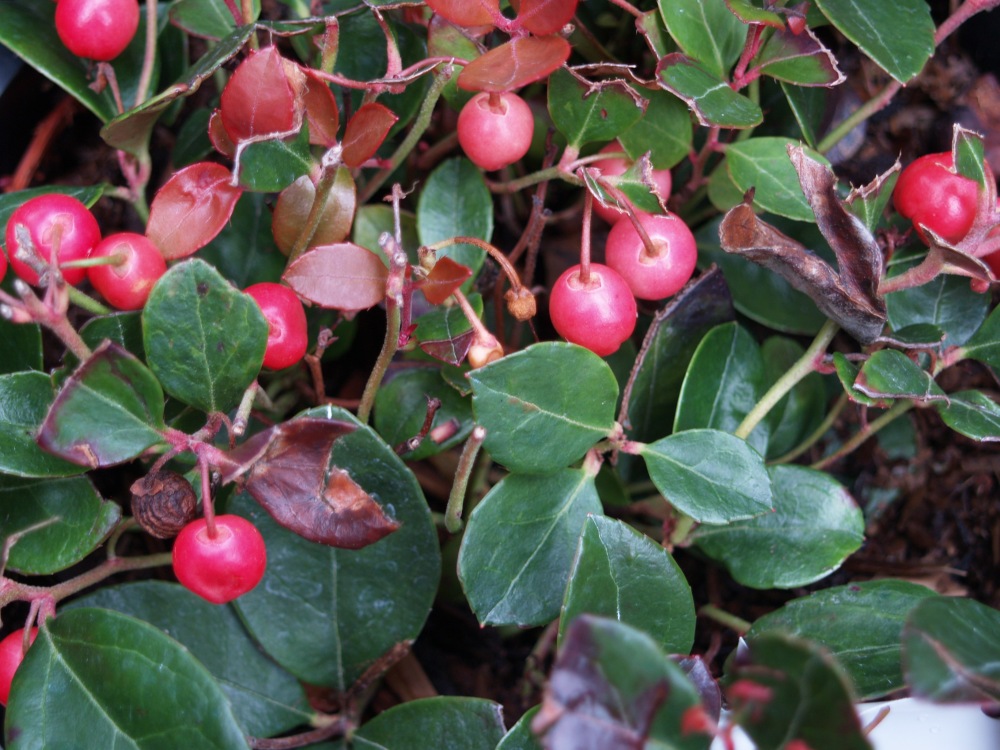As outdoor temperatures turn inhospitable, this should be a period for rest, and certainly I do my best to avoid chores that pile up by the day. Winter weeds have gotten off to a roaring start with ground that has remained damp for weeks, but it is the autumn accumulation of leaves that I most dread. 
Besides the seemingly interminable task of removing leaves and shredding them for mulch, I do not mind the dormancy of trees (Blackgum, Nyssa sylvatica, above) and shrubs so much since there is one thing or another flowering each day in the garden, And, if the blooms of witch hazels (Hamemelis) and mahonias should become too much of the same through the winter months, there are birds at the feeder and nibbling on berries as the cold drags on.
Red berries of nandinas (Nandina domestica, above) and hollies (Ilex) seldom attract much attention, but dogwood berries seldom persist much into December. New in the garden this year is the native wintergreen (Gaultheria procumbens, below), with bland tasting (to me) but lovely fruits that interest chipmunks and squirrels, and also deer. I’ve seen too little of chipmunks in recent years as they scurry so carefully to avoid detection by hawks that invariably soar over the garden, but my wife and I have had more than our fill with squirrels gnawing in the attic. The low growing wintergreens will likely be sprayed with a repellent to deter the deer, and perhaps this will discourage the squirrels also. 
By mid October there are many flowers remaining from shrubs that have bloomed for weeks, or even months. ‘Eternal Fragrance’ daphne (Daphne x transatlantica ‘Blafra’, below) has flowered since spring, and though I am immune to its scent, it has a pleasant manner of flowering just enough to be seen without being covered by blooms so that it is taken for granted. The foliage of this daphne is unremarkable by comparison to variegated daphnes that are also more fragrant (to my nose), but it is a fine and thus far, sturdy evergreen. 
The reblooming Encore azaleas (below) are making a splendid show this autumn after having no more than a few scattered flowers in spring after the severe winter. Several azaleas have not fully recovered from the ice, snow, and constant freezes, but most show no ill effect. With cool, but not cold temperatures and adequate moisture some have flowered for six weeks, and these will usually continue through early frosts. 
Flowering of Encores is not as heavy in early autumn as in the two or three week period in late April into early May, but there are more than enough blooms to make a show. A few cultivars will flower long into November, and if cold is not too severe early, there might be a few blooms in December to accompany autumn flowering camellias and mahonias. I planted Encore azaleas years ago to satisfy my curiosity about the newly introduced repeat bloomers, though I was not very enthusiastic since other azaleas had been chopped out of the garden due to problems with bugs or trouble with the native clay soil. Now, I’m happy to recommend these repeat bloomers.

